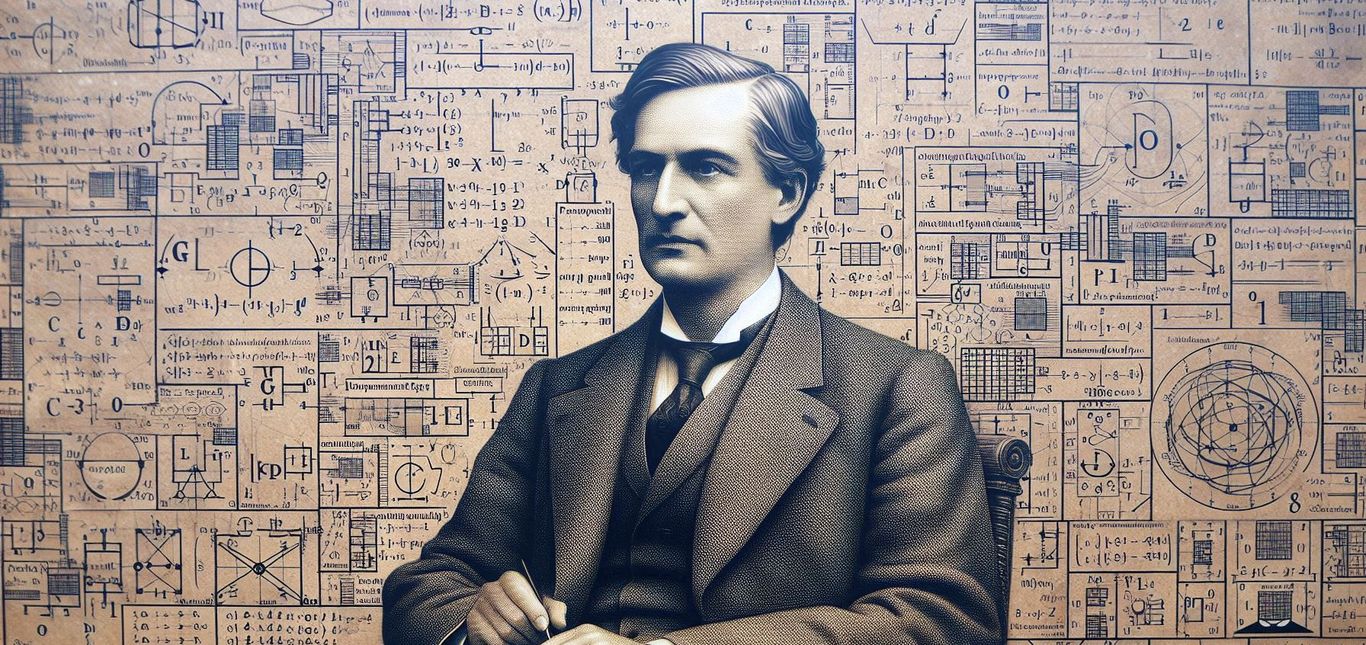AI Origins
The Analytical Engine and the Dawn of Computation

Following the early philosophical musings and mechanical marvels that laid the groundwork for artificial intelligence, the 19th century witnessed a pivotal shift: the emergence of computational thinking. This era saw the transition from abstract ideas to tangible machines capable of processing information, marking a crucial step towards the realization of artificial intelligence.
The Analytical Engine: A Blueprint for Computation
Central to this transformation was Charles Babbage's Analytical Engine, a conceptual mechanical computer designed in the mid-1800s. Though never fully constructed in his lifetime, its design contained the fundamental principles of modern computers: a "store" for memory, a "mill" for processing, and the ability to execute instructions based on punched cards. Babbage envisioned a machine capable of performing complex calculations, driven by a sequence of instructions fed through punched cards, much like a Jacquard loom controlled intricate weaving patterns. This separation of data and instruction was revolutionary, allowing for a level of programmability never before conceived.
Babbage's collaborator, Ada Lovelace, recognized the engine's potential far beyond mere calculations, envisioning its capacity to manipulate symbols and even compose music. Her notes, which included what is considered the first algorithm intended to be processed by a machine, earned her the title of the first computer programmer. Lovelace's insight into the engine's ability to handle symbolic logic, rather than just numerical data, was a crucial leap in understanding the potential of computation. She proposed that the engine could be used to manipulate any information that could be represented symbolically, a concept that foreshadowed the universality of modern computers.
Lovelace's foresight was profound. She understood that Babbage's engine was not just a calculating device but a general-purpose symbol manipulator, capable of imitating any process that could be logically defined. This insight was crucial in bridging the gap between mechanical computation and the abstract concept of intelligent machines. The Analytical Engine, although never fully realized, became a theoretical cornerstone, demonstrating the possibility of automating complex logical operations.
Formalizing Logic: Boole and Frege
Parallel to Babbage's work, mathematicians like George Boole and Gottlob Frege were developing formal systems of logic. Boole's Boolean algebra, a system of symbolic logic that reduces reasoning to algebraic operations, provided a mathematical foundation for digital circuits and information processing. He demonstrated that logical propositions could be expressed as algebraic equations, manipulated using logical operators like AND, OR, and NOT. This system, which operates on binary values (true or false, 1 or 0), became essential for the design of digital computers, where information is processed in binary form.
Frege's work on predicate logic further refined the formalization of reasoning, laying the groundwork for automated theorem proving and logical inference. He developed a system of symbolic logic that could represent complex relationships and quantifiers, enabling the precise formulation of logical arguments. This system was vital for the development of AI, as it provided a method for representing knowledge and reasoning in a formal and unambiguous way.
These advancements in formal logic provided the tools necessary to represent and manipulate knowledge in a precise and unambiguous way. This was essential for the development of AI, as it allowed for the creation of systems that could reason and solve problems based on logical principles. The formalization of logic transformed the study of thought from a philosophical pursuit to a mathematical one, opening the door for the creation of machines capable of logical inference.

The Telegraph and Early Information Theory
The development of the telegraph and the subsequent emergence of information theory in the late 19th century also played a significant role. The ability to transmit information over long distances and the growing understanding of information as a measurable quantity contributed to the development of systems that could process and manipulate data. The telegraph, by encoding and transmitting messages as electrical signals, demonstrated the possibility of representing information in a non-human form.
These early advancements in information theory, though not directly related to AI, provided a crucial framework for understanding how information could be represented and processed. The work of scientists like Claude Shannon, who would later develop information theory in the mid-20th century, built upon these early foundations. The concepts of information entropy and channel capacity, which emerged from the study of telegraph communication, would become vital for the development of AI systems capable of handling and processing data.
Early Responses and the Seeds of Doubt
Despite these advancements, the concept of artificial intelligence still faced considerable skepticism. Many viewed the idea of machines possessing intelligence as a mere fantasy, while others expressed concerns about the potential consequences of creating such beings. The idea of machines replicating human thought was seen as a challenge to the perceived uniqueness of human consciousness.
However, the seeds of modern AI were being sown. The analytical engine, the formalization of logic, and the nascent understanding of information processing provided the intellectual and technological foundations for the dramatic advancements that would follow in the 20th century. The era of computation had begun, and with it, the possibility of creating machines that could think. The 19th century, therefore, marked a pivotal transition, moving from the realm of philosophical speculation to the concrete development of computational tools and theories that would eventually lead to the birth of AI.
- Menabrea, L. F. "Sketch of the Analytical Engine Invented by Charles Babbage, Esq." With notes by Ada Lovelace. Scientific Memoirs, vol. 3, 1843.
- Bromley, Allan G. Charles Babbage: Pioneer of the Computer. MIT Press, 1987.
- Boole, George. An Investigation of the Laws of Thought on Which are Founded the Mathematical Theories of Logic and Probabilities. Macmillan, 1854.
- Frege, Gottlob. Begriffsschrift, a formula language, modeled upon that of arithmetic, for pure thought. Translated by Stefan Bauer-Mengelberg. Harvard university press, 1967.
- Goldstine, Herman H. The Computer from Pascal to von Neumann. Princeton University Press, 1972.
- Ifrah, Georges. The Universal History of Numbers: From Prehistory to the Invention of the Computer. John Wiley & Sons, 2000.
© Copyright. All rights reserved.
We need your consent to load the translations
We use a third-party service to translate the website content that may collect data about your activity. Please review the details in the privacy policy and accept the service to view the translations.
